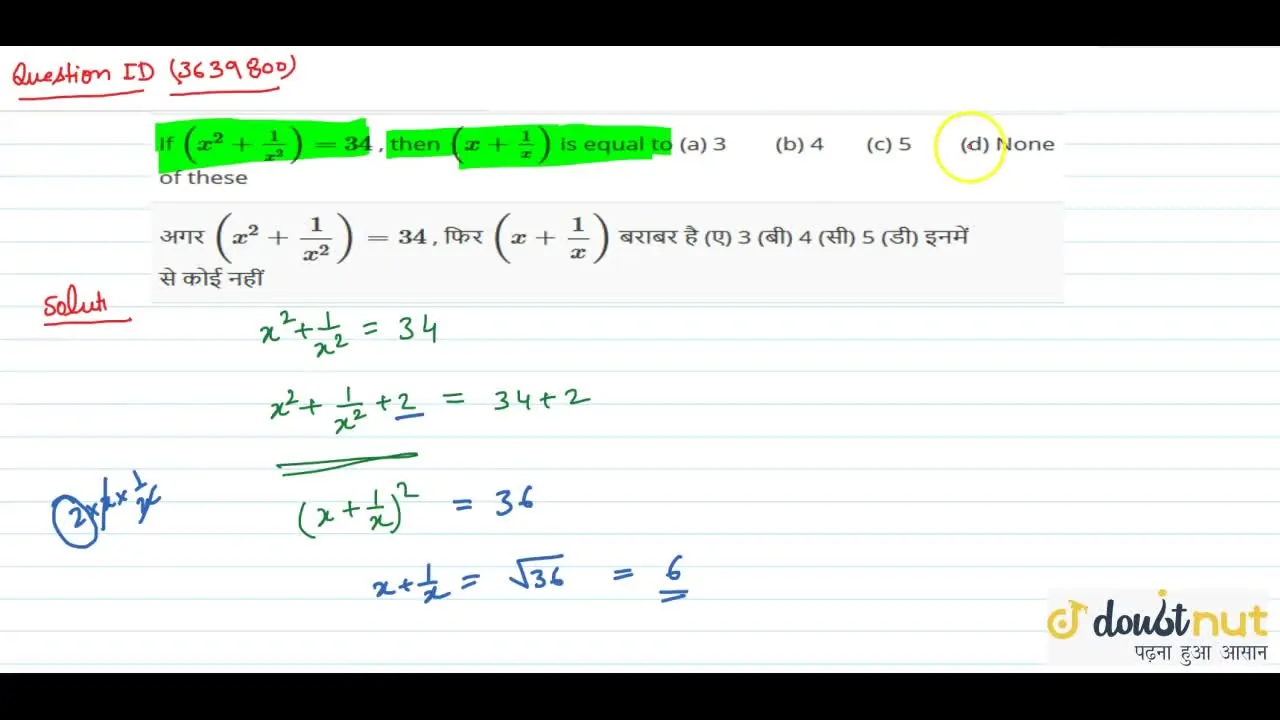If , then is equal to (a) 3 (b) 4 (c) 5 (d) None of these
Step by step video & image solution for If (x^2+1/(x^2))=34 , then (x+1/x) is equal to (a) 3 (b) 4 (c) 5 (d) None of these by Maths experts to help you in doubts & scoring excellent marks in Class 14 exams.
Similar Questions
If (x+1x)=2 , then (x−1x) is equal to (a) 0 (b) 1 (c) 2 (d) 5
View SolutionIf a<b<c<d and k is the number of real roots of the equation (x−a)(x−c)+2(x−b)(x−d)=0 , then equation of the line parallel to y -axis and cutting an intercept 'k' on x-axis is
(A) x=0
(B) x=1
(C) x=2
(D) None of these.View SolutionIf f(x)=|x−3| and g(x)=fof (x) , then for x>10 , g′(x) is equal to (a) 1 (b) -1 (c) 0 (d) none of these
View SolutionIf x−1x=3 , then the value of 1+1x2 is (a) 9 (b) 10 (c) 11 (d) None of these
View SolutionIf x−35 - 2 = -1 , then x is equal to
( a ) 8 ( b) 3 ( c ) -7 ( d ) 2View SolutionIf x=3+√8 , then x2+1x2 is equal to (a) 30 (b) 34 (c) 36 (d) 38
View SolutionIf 2f(x)−3f(1x)=x2(x≠0), then f(2) is equal to (a)−74(b)52 (c) -1 (d) none of these
View SolutionIf x3+1x3=110, then x+1x=? (a)5 (b) 10 (c) 15 (d) none of these
View SolutionLet A=[123−5] and B=[1002] and X be a matrix such that A=BX , then X is equal to 12[243−5] (b) 12[−2435] (c) [243−5] (d) none of these
View SolutionIf 8f(x)+6f(1x)=x+5 and y=x2(f(x), then dydx at x=−1 is equal to 0 (b) 114 (c) −14 (d) None of these
View Solution


